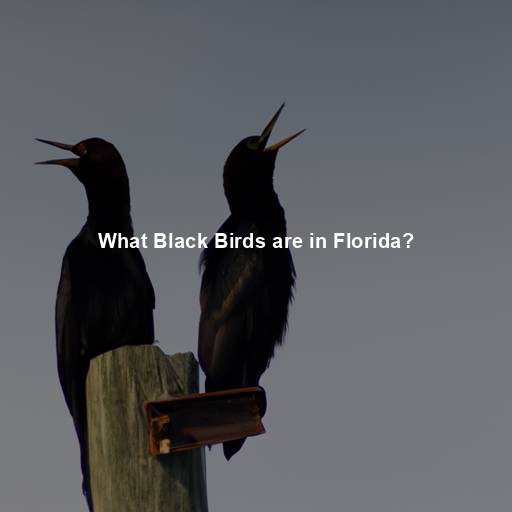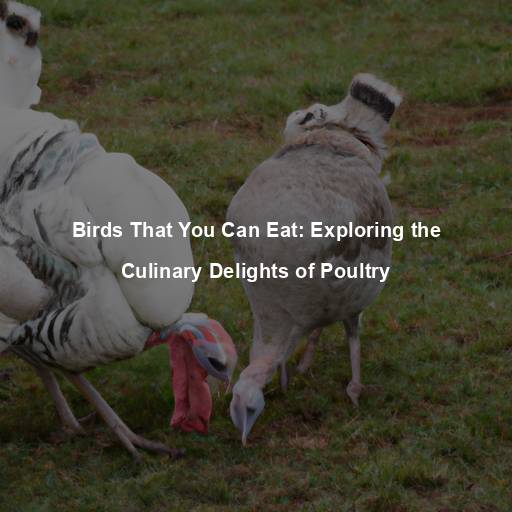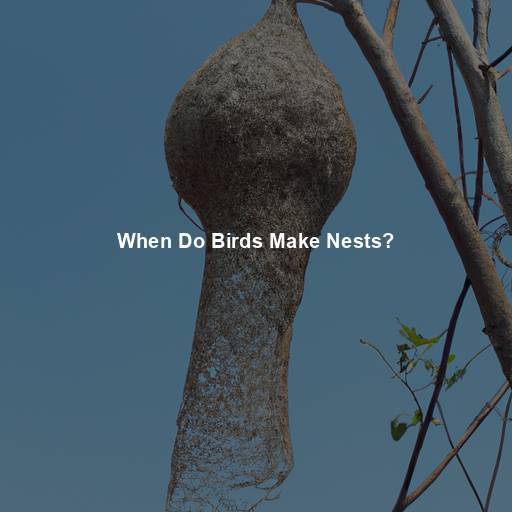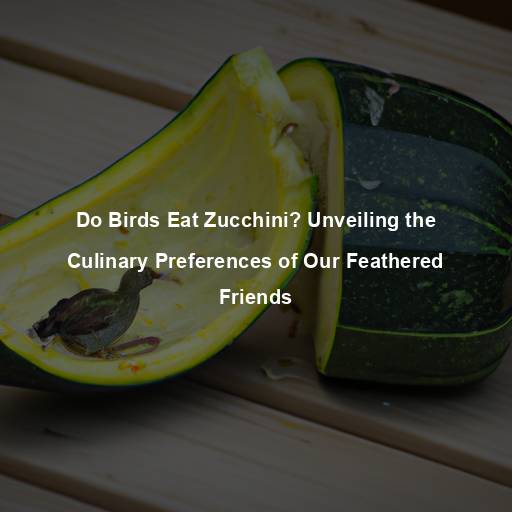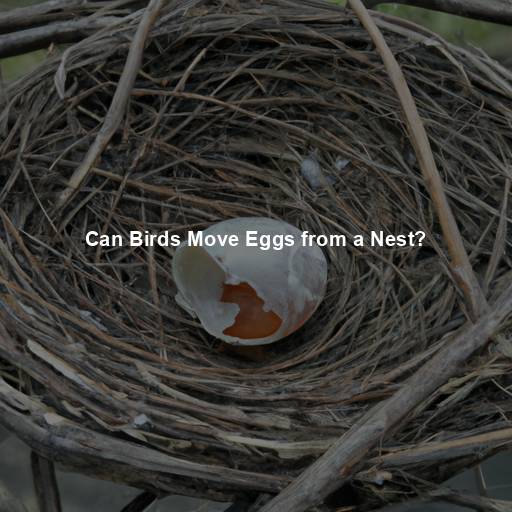What Black Birds are in Florida?
Last Updated on July 15, 2023 by Evan
Florida is known for its diverse bird population, with over 500 species recorded in this beautiful state. Among these avian creatures, black birds hold a special place, captivating bird enthusiasts and nature lovers alike. In this article, we will explore the fascinating world of black birds in Florida, delving into their unique characteristics, habits, and the role they play in the state’s rich biodiversity. Join us on this ornithological journey as we uncover the enchanting allure of black birds in the Sunshine State.
Contents [hide]
- 1 The Beauty of Black Birds
- 2 Habitats and Behavior
- 3 Conservation and Importance
- 4 Birdwatching Hotspots
- 5 FAQs: What Black Birds are in Florida?
- 5.1 What types of black birds can be found in Florida?
- 5.2 Are there any endangered black bird species in Florida?
- 5.3 Are there any migratory black bird species in Florida?
- 5.4 Do black birds in Florida pose any threats to crops or gardens?
- 5.5 Are there any black bird species known for their unique behaviors in Florida?
- 5.6 What is the best way to observe black birds in Florida?
The Beauty of Black Birds
Black birds, with their dark plumage and mysterious presence, add a touch of elegance and intrigue to Florida’s natural landscapes. These birds come in various shapes and sizes, each possessing its own distinctive features and behaviors. Let’s take a closer look at some of the remarkable black bird species found in the state.
Common Grackle (Quiscalus quiscula)
In the vast tapestry of avian wonders, one creature stands out with its enigmatic allure – the Common Grackle. This enchanting black bird, bedecked in a celestial cloak of iridescent plumage, captivates with its kaleidoscope of shimmering blues, greens, and bronzes. Awe-inspiring in its magnitude, flocks of these medium-sized marvels paint the skies, their synchronized aerial ballet leaving onlookers spellbound. Like a chameleon of the avian world, the Common Grackle thrives in various landscapes, seamlessly adapting from bustling urban arenas to serene marshes and the verdant embrace of agricultural fields.
Red-winged Blackbird (Agelaius phoeniceus)
The Red-winged Blackbird is a familiar sight in wetland areas across Florida. The males of this species are easily recognizable by their jet-black plumage and vibrant red shoulder patches, which they display during courtship and territorial defense. With their distinctive “conk-la-ree” call, Red-winged Blackbirds contribute to the melodic symphony of Florida’s marshes and swamps.
Boat-tailed Grackle (Quiscalus major)
Endemic to the coastal regions of Florida, the Boat-tailed Grackle is a charismatic black bird that thrives in marshy habitats. Both males and females boast glossy black feathers, but it is the male’s long, keel-shaped tail that gives this species its name. Boat-tailed Grackles are known for their loud and varied vocalizations, which add a lively ambiance to their coastal dwellings.
Common Raven (Corvus corax)
Dazzling in their ebony elegance, the enigmatic Common Raven commands attention with its awe-inspiring smarts and chameleon-like adaptability. Whispers of their illustrious presence occasionally grace the sun-kissed skies of Florida, especially in the untamed northern reaches. Revered for their resonant “croaking” symphonies and uncanny knack for cracking intricate puzzles, these beguiling birds epitomize the art of profound ravenry, defying conventional avian norms.
Habitats and Behavior
Black birds in Florida exhibit diverse habitat preferences and behaviors, reflecting the state’s varied ecosystems. While some species favor wetlands and marshes, others thrive in urban areas and agricultural landscapes. Understanding their habitats and behaviors is essential to appreciating these avian wonders.
Wetland Dwellers
Many black birds, such as the Red-winged Blackbird and Boat-tailed Grackle, find solace in Florida’s wetlands. These habitats provide abundant food sources and nesting opportunities. From freshwater marshes to coastal estuaries, wetlands offer a rich tapestry of vegetation and water, attracting a myriad of black bird species.
Urban Adaptability
Some black birds have adapted remarkably well to urban environments. The Common Grackle, for instance, can be found in abundance in cities and suburban areas throughout Florida. Their willingness to exploit human-altered landscapes, coupled with their resourcefulness, enables them to thrive amidst human activity.
Migratory Patterns
Several black bird species in Florida, such as the Red-winged Blackbird, exhibit migratory behavior. These birds undertake impressive journeys, traveling vast distances to reach their breeding or wintering grounds. The marshes and wetlands of Florida serve as crucial stopover points, providing essential rest and refueling opportunities for these migratory travelers.
Conservation and Importance
Florida’s intricate ecosystem owes much of its delicate balance to the presence of black birds. These enigmatic creatures play a pivotal role in maintaining the state’s overall health and vitality. Carrying their ecological significance close to heart is not only necessary for preserving Florida’s natural heritage but also imperative for the protection and wellbeing of these remarkable feathered beings.
Seed Dispersal and Insect Control
In the vast tapestry of nature’s intricate web, black bird species, such as the mesmerizing Red-winged Blackbirds and the majestic Boat-tailed Grackles, weave their enigmatic spell. Little do we realize the pivotal role they play in the delicate dance of seed dispersal, as they traverse diverse habitats, unknowingly becoming harbinger of new life and renewal. These ebony-feathered creatures, with their tireless foraging and exploration, scatter seeds with every step, nurturing the evolution of vibrant plant communities. And the marvel doesn’t stop there – these avian sentinels also serve as guardians of balance, diligently curbing insect populations and embodying the essence of nature’s impeccable harmony.
Indicators of Wetland Health
Black birds that inhabit wetland areas, such as the Red-winged Blackbird, serve as indicators of wetland health. Their presence or absence can reflect the overall condition of these fragile ecosystems. Monitoring black bird populations can provide valuable insights into the state of wetlands, helping guide conservation efforts and environmental management practices.
Cultural Significance
For countless generations, the enigmatic allure of black birds has woven its spell, leaving an indelible mark on the tapestry of human existence. From the rich tapestries of ancient folklore to the ethereal melodies that resonate through the air, these winged creatures have carved a niche in our collective consciousness. By nurturing their delicate ecosystems and guarding these guardians of the wild, we not only safeguard the diversity of our planet but also honor the centuries-old bond between mankind and the untamed beauty of nature.
Birdwatching Hotspots
For those captivated by the wonders of avian life and the beauty of nature, Florida presents an enchanting assortment of birdwatching havens, where an abundance of splendid black-winged creatures inhabit their authentic ecosystems. Prepare to venture into a world of bewildering encounters as we unveil a selection of noteworthy destinations for your exhilarating birding expeditions:
Nestled on the breathtaking coast of Florida, lies the enigmatic Merritt Island National Wildlife Refuge. Within its vast expanse of untouched beauty, a symphony of wildlife dances in harmonious chaos, defying all expectations. From the perplexing flight patterns of migratory birds to the mesmerizing dance of manatees in the shimmering waters, this refuge is a burst of tranquility in a world of uncertainty. Yet, amidst the bewildering array of flora and fauna, one thing becomes clear – nature has the power to captivate, confound, and ultimately, inspire.
– Everglades National Park
– Corkscrew Swamp Sanctuary
– Ding Darling National Wildlife Refuge
Welcome to Paynes Prairie Preserve State Park, a captivating natural oasis filled with wonder and an abundance of diverse flora and fauna. Prepare to be mesmerized by the unpredictability of this extraordinary park as you embark on a journey of discovery through its ever-changing landscape. From the ethereal beauty of the sun-kissed grasslands to the enigmatic encounters with fascinating wildlife, each step you take here will leave you in awe and craving for more. Get ready to immerse yourself in the captivating paradox of tranquility and excitement that Paynes Prairie Preserve has to offer.
Pack your binoculars, field guide, and a heart full of curiosity as you embark on an extraordinary journey through these awe-inspiring birding havens. Expect a burst of excitement and intrigue as you immerse yourself in the natural wonder of these remarkable locations. Let your senses be perplexed and your spirit be captivated by the diverse avian species that await your discovery.
Black Skimmer (Rynchops niger)
One of the most unique black birds found in Florida is the Black Skimmer. With its striking black and white plumage, long wings, and distinctive bill, this species is a master of aerial fishing. Black Skimmers are often seen skimming the water’s surface, their lower bill slicing through the water to catch small fish. These captivating birds can be found along Florida’s coastlines, nesting in colonies on sandy beaches.
Common Crow (Corvus brachyrhynchos)
While not exclusive to Florida, the Common Crow is a familiar sight throughout the state. With its glossy black feathers and intelligent eyes, this bird has long been a subject of folklore and fascination. Despite their somewhat “bad reputation,” crows are highly intelligent and adaptable creatures. Their raucous cawing and impressive problem-solving abilities make them a truly remarkable species to observe.
Fish Crow (Corvus ossifragus)
Similar in appearance to the Common Crow, the Fish Crow is a smaller and more coastal-dwelling species. Found along Florida’s coastal regions, particularly near estuaries and marshes, Fish Crows are known for their distinctive calls that resemble a nasal “caw”. These birds are skilled at scavenging and are often spotted near shorelines, searching for food and nesting materials.
The Allure of Black Birds
Black birds possess an undeniable allure, captivating the hearts and minds of bird lovers and nature enthusiasts. Their dark plumage stands in stark contrast to the vibrant colors of Florida’s landscapes, creating a visual spectacle that is both mesmerizing and evocative. These birds bring a sense of mystery and elegance to the natural world, adding depth and character to the ecosystems they inhabit.
The Role of Black Birds in Florida’s Ecosystem
Beyond their aesthetic appeal, black birds play a crucial role in maintaining the delicate balance of Florida’s ecosystems. Let’s explore some of the ways in which these avian wonders contribute to the overall health and biodiversity of the state.
Seed Dispersal and Plant Regeneration
When it comes to the intriguing world of nature, it’s fascinating how black birds like the charismatic Red-winged Blackbirds and the striking Boat-tailed Grackles unknowingly play a vital role in the expansion and rejuvenation of plant communities. While these feathered companions go about their daily quest for sustenance, their fondness for fruits and berries becomes a hidden catalyst for the dispersal of seeds, sowing the seeds of life through their droppings. This unique alliance between our avian friends and Mother Nature ensures a harmonious connection that not only promotes the survival of vibrant plant species but also fortifies the resilience of Florida’s remarkable flora.
Insect Control and Pest Management
Black birds are known to be voracious insect consumers, helping to control pest populations naturally. Reducing the number of harmful insects, such as mosquitoes and agricultural pests, black birds contribute to the overall balance of Florida’s ecosystems. Their presence helps to maintain ecological harmony and reduce the need for chemical insecticides, promoting a healthier environment for both wildlife and humans.
Indicators of Wetland Health and Water Quality
In the enchanting realm of wetlands, vibrant winged creatures with ebony feathers reign supreme – the Red-winged Blackbirds and Boat-tailed Grackles. These mesmerizing beings have emerged as guardians of wetland health and the bearer of secrets about water quality. Their existence is intricately entwined with the wetlands – they create homes, search for nourishment, and dance the dance of life, rendering them acutely attuned to the slightest tremors in these delicate ecosystems. By vigilantly observing and tracking the black bird populations, a mysterious window into the overall well-being of wetlands materializes, allowing invaluable insight to shape conservation endeavors and steer the path of environmental stewardship.
Preserving Florida’s Black Birds: A Call to Action
Protecting and conserving Florida’s black bird species is crucial for the preservation of the state’s biodiversity. Here are some actionable steps individuals, organizations, and communities can take to ensure the continued presence of these remarkable birds:
Preserve and Restore Wetland Habitats
Wetlands, those enigmatic wonderlands, play a vital role in sheltering myriad black bird species. By embracing wetland conservation endeavors and actively engaging in the restoration of these mystical habitats, we pave the way for the nurturing of the perfect environments for these creatures to flourish. With each step we take to protect these murky haven, we unlock the secrets of nature’s delicate tapestry, allowing these captivating birds to prosper and mesmerize with their beauty.
Promote Sustainable Pest Management Practices
Encouraging the use of sustainable pest management practices, such as integrated pest management (IPM), can reduce reliance on harmful chemical insecticides. By minimizing the use of pesticides, we can create a safer environment for black birds and other wildlife while still effectively managing pest populations.
Support Citizen Science Initiatives
Participating in citizen science initiatives, such as bird monitoring programs, can provide valuable data on black bird populations and their habitats. Contributing to scientific research efforts helps raise awareness about the importance of these birds and supports informed conservation strategies.
Educate and Raise Awareness
By delving into the intricate world of black birds, we uncover a tapestry of ecological wonders that leaves us awe-inspired. A gentle nudge towards enlightenment can ignite a spark of motivation within us, compelling us to spread the word far and wide. Let us come together in unison, sharing with our community, loved ones, and friends the captivating tales of these remarkable creatures, as we unveil the critical role they play in maintaining balance in their fragile habitats.
A Final Note
Delve into the mesmerizing world of Florida’s ebony-feathered creatures, their undeniably alluring charm intertwined with their vital role in the delicate ecological balance. As we embark on this journey of appreciation and conservation, we embark on a mission to cherish and safeguard the diverse wonders that Florida’s nature holds. By nurturing this coexistence between man and bird, we pave the way for a future where generations can revel in the spellbinding presence of these winged gems.
FAQs: What Black Birds are in Florida?
What types of black birds can be found in Florida?
Florida, a captivating state adorned with diverse avian treasures, is a sanctuary for those fascinated by the enigmatic allure of black feathered creatures. Among the retinue of ebony enchantment, the Red-winged Blackbird, Common Grackle, Boat-tailed Grackle, Fish Crow, and European Starling reign supreme in their public appearances. Cloaked in mesmerizing obsidian attire, these captivating species grace the distinctive landscapes of Florida, venturing across a tapestry of habitats in their relentless pursuit of the mysterious and the unknown.
Are there any endangered black bird species in Florida?
In the fascinating landscape of Florida, there exists a hidden realm of endangered black bird species that beckons our attention. One remarkable inhabitant of this world is the Florida Grasshopper Sparrow, a small blackbird that embodies both elegance and fragility. Amidst the intricate tapestry of nature’s symphony, it presents its unique ebony plumage and serenades the wild with its haunting melody, casting a spell of awe upon all who encounter it. Alas, the fate of this wondrous creature hangs perilously in the balance, as it navigates a treacherous labyrinth of perils, each menacing its fragile existence.
Are there any migratory black bird species in Florida?
Florida, an awe-inspiring haven for migratory birds, embraces a vibrant tapestry of feathered wonders. Among these esteemed avian travelers are the Common Grackle, Red-winged Blackbird, and Boat-tailed Grackle, seasoned nomads journeying from their breeding grounds in northern realms to bask in Florida’s warm embrace during the winter solstice. A playground of biodiversity, this sun-kissed state presents an enthralling spectacle for birdwatchers and nature enthusiasts, inviting them to witness firsthand the symphony of colors and melodies brought forth by these captivating migratory treasures.
Do black birds in Florida pose any threats to crops or gardens?
Some black bird species in Florida, such as the Common Grackle, can become pests for farmers and gardeners. They feed on crops, fruits, and seeds, which can result in damage to agricultural fields or gardens. Special deterrents or scare tactics are sometimes implemented to minimize their impact on agricultural production, while also ensuring the preservation of these bird species.
Are there any black bird species known for their unique behaviors in Florida?
The Boat-tailed Grackle, oh what an enigmatic being! Its glossy black feathers shimmering in the Florida sun, it captivates with its mesmerizing behaviors. And oh, the males, the true performers of the avian world! With a flair for the dramatic, they embark on a mesmerizing dance routine, raising tails, puffing feathers, leaving us in awe of their captivating display. A true testament to the wonders of nature, the Boat-tailed Grackle’s unique behaviors during breeding season continue to bewilder and astound us.
What is the best way to observe black birds in Florida?
To observe black birds in Florida, it is highly recommended to visit areas that offer diverse habitats such as wetlands, marshes, or coastal regions. These habitats provide ideal conditions for many black bird species and offer great opportunities for birdwatching. Additionally, joining local birding groups or guided tours with knowledgeable experts can enhance the observation experience and provide valuable insights into the behavior and identification of different black bird species.

